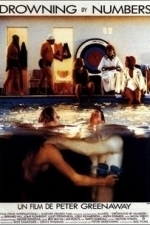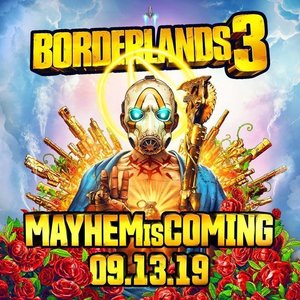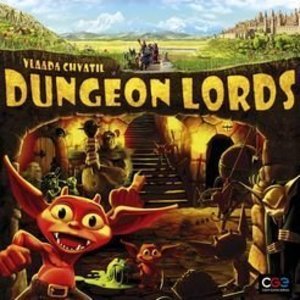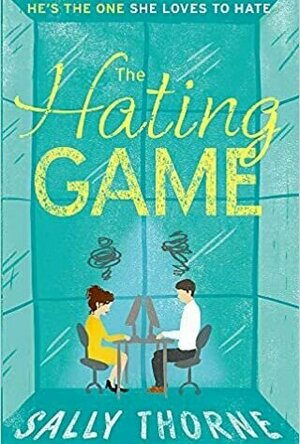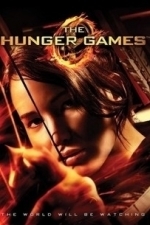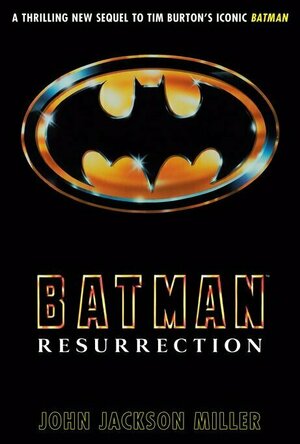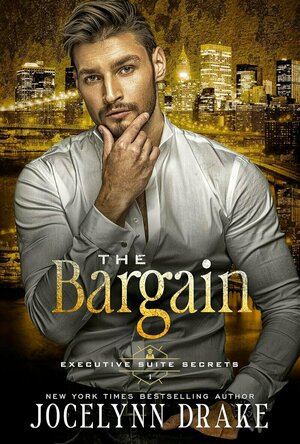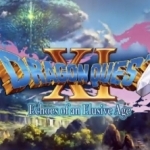Search
Search results
Neil Gaiman recommended Drowning by Numbers (1988) in Movies (curated)
_RainAllTheTime (17 KP) rated the PlayStation 4 version of Borderlands 3 in Video Games
Oct 4, 2019
Almost faultless
I was very much looking forward to the release of Borderlands 3 and honestly.....it only fell short ever so slightly
Firstly, the negatives......the slit screen is not the greatest. As a game series I play with my boyfriend, I was very happy to hear that number 3 would include the split screen play but have been left a bit disappointed. The split screen only comes is horizontal play, which can make some of the enemies hard to see, some controls off, and very hard to see your own menu.
Secondly, the subtitles, menu etc are all horrendously small. You can make it bigger but not by very much.
I really do hope that Gearbox fix these in their updates as I have seen online that a lot of other people aren't happy with these issues.
Up and on to the positives! The game itself is BEA-U-TIFUL. The graphics are very well done. The new characters are great too. There is SO many more weapons to find and it's much easier to gain experience and get good weapons.
Some of the quests are hard just because the sheer number of bad guys you have to kill and with the weird split screen, which likes to lag sometimes, but once you get used to it, your skill set is back up.
If you are a fan of Borderlands, I would very much still recommend you play 3. It is very much a classic Borderlands game and is very fun to play, also a great added bonus is Claptrap isn't as annoying as he is in the first two games.
Firstly, the negatives......the slit screen is not the greatest. As a game series I play with my boyfriend, I was very happy to hear that number 3 would include the split screen play but have been left a bit disappointed. The split screen only comes is horizontal play, which can make some of the enemies hard to see, some controls off, and very hard to see your own menu.
Secondly, the subtitles, menu etc are all horrendously small. You can make it bigger but not by very much.
I really do hope that Gearbox fix these in their updates as I have seen online that a lot of other people aren't happy with these issues.
Up and on to the positives! The game itself is BEA-U-TIFUL. The graphics are very well done. The new characters are great too. There is SO many more weapons to find and it's much easier to gain experience and get good weapons.
Some of the quests are hard just because the sheer number of bad guys you have to kill and with the weird split screen, which likes to lag sometimes, but once you get used to it, your skill set is back up.
If you are a fan of Borderlands, I would very much still recommend you play 3. It is very much a classic Borderlands game and is very fun to play, also a great added bonus is Claptrap isn't as annoying as he is in the first two games.
Peter Shephard (2822 KP) rated Dungeon Lords in Tabletop Games
Sep 19, 2019
Fun and fairly quick game
I've had Dungeon Lords for a few months now. I managed to play a quick, trial game with a friend when I first got it, and it was entertaining.
It then went back in the cupboard.
At the weekend, I managed to convince my wife to give it a try - eventually, she relented. She doesnt like playing a game where at least one player doesnt KNOW the rules.
The first game, we stumbled through, easy enough, but some "creativity" with the rules (as found) meant it wasnt exactly as per the rulebook. She enjoyed it enough to ask to play it again.
Last night, we played it again. And, having muddled through the first game it was a totally different game. It was entertaining, it was creative, the rules felt like they flowed much better. With two players (and 2 "NPCs") it's a challenge but probably not infinitely replayable. Next challenge will be to use the full rules - the rules are set up as "combat examples", "basic play", then "normal play" with a bit more variation and a bit tougher.
There are lots of nice nods to other classic dungeon crawl genres and games, and the boards are clear enough for easy play.
There are LOTS of tokens and cards, so I would recommend investing in some sort of in-box storage system - I spent about £2 on the one i use, which I think is supposed to be for screws and nails!
It's a really fun game, and I am now looking at the expansion for a near-future purchase!
It then went back in the cupboard.
At the weekend, I managed to convince my wife to give it a try - eventually, she relented. She doesnt like playing a game where at least one player doesnt KNOW the rules.
The first game, we stumbled through, easy enough, but some "creativity" with the rules (as found) meant it wasnt exactly as per the rulebook. She enjoyed it enough to ask to play it again.
Last night, we played it again. And, having muddled through the first game it was a totally different game. It was entertaining, it was creative, the rules felt like they flowed much better. With two players (and 2 "NPCs") it's a challenge but probably not infinitely replayable. Next challenge will be to use the full rules - the rules are set up as "combat examples", "basic play", then "normal play" with a bit more variation and a bit tougher.
There are lots of nice nods to other classic dungeon crawl genres and games, and the boards are clear enough for easy play.
There are LOTS of tokens and cards, so I would recommend investing in some sort of in-box storage system - I spent about £2 on the one i use, which I think is supposed to be for screws and nails!
It's a really fun game, and I am now looking at the expansion for a near-future purchase!
Otway93 (580 KP) rated Resident Evil (2021) in Movies
Feb 13, 2022
Story (1 more)
Nostalgic
Casting (1 more)
Character Traits
A fun film, but not without obvious flaws.
Resident Evil: Welcome to Raccoon City is a great film. It attempts to combine key elements from the first 3 Resident Evil games into one movie, which kind of works, and kind of doesn't at the same time. Expect a lot of familiar moments and memorable key moments from the story of Raccoon City, but also don't get too excited because a lot of key moments and characters are missing entirely.
The film should have been two films really, the first covering the Mansion Incident, and the second covering the outbreak in Raccoon City.
The characters, while being most of the best known characters from the original game, are present yet at the same time not quite right. The casting, while not terrible, did make some mistakes, mostly in Tom Hopper's portrayal of Wesker, he just seems far too young for the role. But that isn't the only issue. The character's personalities are not as you remember them.
Chris comes across as very arrogant and annoying, Jill comes across as quite sassy, and poor Leon, the rookie cop seems to be a bumbling fool there for comic relief.
The best written and acted character by a long way is Claire, who comes across as the little rebel we know and love.
All in all, definitely worth a watch, and I will definitely watch it again. But if you are a huge Resident Evil nerd such as myself, it will certainly have it's moments for you, but don't go in expecting to see the entire story of Raccoon City unfold before your eyes.
Also, don't forget to keep watching the credits...
The film should have been two films really, the first covering the Mansion Incident, and the second covering the outbreak in Raccoon City.
The characters, while being most of the best known characters from the original game, are present yet at the same time not quite right. The casting, while not terrible, did make some mistakes, mostly in Tom Hopper's portrayal of Wesker, he just seems far too young for the role. But that isn't the only issue. The character's personalities are not as you remember them.
Chris comes across as very arrogant and annoying, Jill comes across as quite sassy, and poor Leon, the rookie cop seems to be a bumbling fool there for comic relief.
The best written and acted character by a long way is Claire, who comes across as the little rebel we know and love.
All in all, definitely worth a watch, and I will definitely watch it again. But if you are a huge Resident Evil nerd such as myself, it will certainly have it's moments for you, but don't go in expecting to see the entire story of Raccoon City unfold before your eyes.
Also, don't forget to keep watching the credits...
Laura Doe (1350 KP) rated The Hating Game in Books
Apr 22, 2022
I wasn’t sure what to expect of this book as I had seen some reviews where people had loved it and some where people had hated it. I went into it with an open mind and within 18 pages I was laughing at some of the comments Lucy made about Josh.
The typical chick-lit with a touch of humour, it wasn’t hard to guess the outcome of the book, but it was a joyful and funny ride to get there. There were so many moments where I either laughed out loud or snorted because of a comment, making it a good read in my eyes!
I enjoyed the hatred between Lucy and Josh and all of the little “games” that they played in the office to see who could annoy each other first. I did guess where the story was going to end with them quite early on in the book, but I still needed to find out what some of the things meant (like the marks in Josh’s planner) and the journey was fun to undertake with Lucy and Josh.
At first I found Josh extremely unlikeable, but after the paint balling team building day, I grew to like him more and more with his actions. Although I definitely wouldn’t have come to the conclusion that he was shy and that was the reason for his behaviour like Lucy did.
Sally Thorne’s writing was so easy to get lost in, and I found myself having to make myself put the book down to get some sleep but not being able to wait to be able to pick it back up again. I think this might be a go to book to read again and again. I will have to see if Sally Thorne’s other books are just as good!
The typical chick-lit with a touch of humour, it wasn’t hard to guess the outcome of the book, but it was a joyful and funny ride to get there. There were so many moments where I either laughed out loud or snorted because of a comment, making it a good read in my eyes!
I enjoyed the hatred between Lucy and Josh and all of the little “games” that they played in the office to see who could annoy each other first. I did guess where the story was going to end with them quite early on in the book, but I still needed to find out what some of the things meant (like the marks in Josh’s planner) and the journey was fun to undertake with Lucy and Josh.
At first I found Josh extremely unlikeable, but after the paint balling team building day, I grew to like him more and more with his actions. Although I definitely wouldn’t have come to the conclusion that he was shy and that was the reason for his behaviour like Lucy did.
Sally Thorne’s writing was so easy to get lost in, and I found myself having to make myself put the book down to get some sleep but not being able to wait to be able to pick it back up again. I think this might be a go to book to read again and again. I will have to see if Sally Thorne’s other books are just as good!
Merissa (12889 KP) rated Blowout (Breakers Hockey #6) in Books
Jan 4, 2023
I was lost in their story and loved every word.
BLOWOUT is the sixth book in the Breakers series but you could read it as a standalone. Both characters are mentioned in previous books but you don't NEED to have read those to fully appreciate this story.
Cas was a player - until Jules came into his life. Now, he wants her but won't go past the boundaries she has set. Jules has too much going on in her life to put up with a playboy! Her son needs her and she needs work to keep food on the table and a roof over their heads. But Cas - very gently - breaks down her defences. And what horrible way does he do that? By caring. By putting her first. By treating her the way he believes she should be treated. Oh, man!
I felt for both Cas and Jules in this. Yes, Cas is in a better position financially, but emotionally, he's just as hurt as Jules. It is by being together, by opening themselves to each other, that these two work so well. No lies, no games (not conscious ones, anyway,) just two people trying to figure out what everyone else seems to already know.
The pacing was perfect and I read this in one sitting, unable to put it down. I was lost in their story and loved every word. A great addition to the series and absolutely recommended by me. Now, I just need to wait for Theo's story!
** same worded review will appear elsewhere **
* A copy of this book was provided to me with no requirements for a review. I voluntarily read this book, and the comments here are my honest opinion. *
Merissa
Archaeolibrarian - I Dig Good Books!
Cas was a player - until Jules came into his life. Now, he wants her but won't go past the boundaries she has set. Jules has too much going on in her life to put up with a playboy! Her son needs her and she needs work to keep food on the table and a roof over their heads. But Cas - very gently - breaks down her defences. And what horrible way does he do that? By caring. By putting her first. By treating her the way he believes she should be treated. Oh, man!
I felt for both Cas and Jules in this. Yes, Cas is in a better position financially, but emotionally, he's just as hurt as Jules. It is by being together, by opening themselves to each other, that these two work so well. No lies, no games (not conscious ones, anyway,) just two people trying to figure out what everyone else seems to already know.
The pacing was perfect and I read this in one sitting, unable to put it down. I was lost in their story and loved every word. A great addition to the series and absolutely recommended by me. Now, I just need to wait for Theo's story!
** same worded review will appear elsewhere **
* A copy of this book was provided to me with no requirements for a review. I voluntarily read this book, and the comments here are my honest opinion. *
Merissa
Archaeolibrarian - I Dig Good Books!
David McK (3562 KP) rated The Hunger Games (2012) in Movies
Jun 5, 2022
So, the pop-culture behometh that was (is?) 'The Hunger Games'.
It's a trilogy of Young Adult (I hate that term! Us older adults can like them, too ...) novels, made into a quartet of movies.
This is the first in both the novels and the movie series.
While, yes, I have read those novels - I'm not sure, but maybe after originally having watched this film back in 2012 or so? - I can't really remember the full ins and outs of the plot - except the obvious! - although I am sure that, as always, liberties will have been taken, as movies and prose are two distinct mediums.
Set in the future dystopia of Panem (post apocalyptic America?), once every year the 12 districts are forced to randomly choose and send two teenagers - one boy and a girl - to The Capitol to participate in a televised fight to the death inside a giant man-made arena. Katniss Everdeen is one of those chosen from District 12, volunteering to take her sister's place when her sisters name is chosen during her first year of mandatory participation. The film (like what I remember from the book) draws a clear distinction between those from The Capitol - who view this all as a grand sport, and who are very definitely the haves of this world against those from the various districts (the have nots), while also taking the opportunity to make a point about how those in power can treat and abuse those without.
Yes, it's violent.
Yes, I'm sure some of the bloodier parts of the book were cut in order to get the PG-13 rating it does.
Yes, Jennifer Lawrence shines in the lead role
Yes, that *is* Chris Hemsworth's (otherwise known as the MCU's Thor) brother Liam.
It's a trilogy of Young Adult (I hate that term! Us older adults can like them, too ...) novels, made into a quartet of movies.
This is the first in both the novels and the movie series.
While, yes, I have read those novels - I'm not sure, but maybe after originally having watched this film back in 2012 or so? - I can't really remember the full ins and outs of the plot - except the obvious! - although I am sure that, as always, liberties will have been taken, as movies and prose are two distinct mediums.
Set in the future dystopia of Panem (post apocalyptic America?), once every year the 12 districts are forced to randomly choose and send two teenagers - one boy and a girl - to The Capitol to participate in a televised fight to the death inside a giant man-made arena. Katniss Everdeen is one of those chosen from District 12, volunteering to take her sister's place when her sisters name is chosen during her first year of mandatory participation. The film (like what I remember from the book) draws a clear distinction between those from The Capitol - who view this all as a grand sport, and who are very definitely the haves of this world against those from the various districts (the have nots), while also taking the opportunity to make a point about how those in power can treat and abuse those without.
Yes, it's violent.
Yes, I'm sure some of the bloodier parts of the book were cut in order to get the PG-13 rating it does.
Yes, Jennifer Lawrence shines in the lead role
Yes, that *is* Chris Hemsworth's (otherwise known as the MCU's Thor) brother Liam.
David McK (3562 KP) rated Batman: Resurrection in Books
Apr 6, 2025
Michael Keaton's version of The Caped Crusader seems to have undergone something of a renaissance in recent years, with the publication of the Batman '89 graphic novels, and with his reappearance in the otherwise-disappointing movie 'The Flash' from 2023.
So roughly 35 or so years after the original 'Batman' film - which reimagined him from the camp flamboyant character of the '60s TV series to something altogether more serious - we get this novel, set between the events of 'Batman' And 'Batman Returns' and so set in the very-gothic Tim Burton version of Gotham instead of the more-grounded Christopher Nolan version: a Gotham that is still reeling from the after-effects of The Jokers gas attack towards the end of that film.
With said Gas, and the chemical attack earlier in the film in the form of Smylex, kickstarting the plot here by providing the reason behind the creation of what, to me, is one of the lesser-known of Batman's Rogue Gallery - a character that, without giving too much away, I only really first became aware of through playing the Arkham Asylum series of videogames, where he has a larger role in one of the later entries (and who has yet, to my knowledge, make it to the movies - ironic, when you consider his profession).
Him, and the puppeteer pulling his strings - both of whom I have encountered in said video games; neither of which have played a larger role (any?) in any of the live-action Batman films.
As an 'in-between' novel, there's also hints of things to come with cameo's from certain characters who will later play a larger role in Batman Returns, and by one character in particular who the upcoming sequel to this is going to centre on.
So roughly 35 or so years after the original 'Batman' film - which reimagined him from the camp flamboyant character of the '60s TV series to something altogether more serious - we get this novel, set between the events of 'Batman' And 'Batman Returns' and so set in the very-gothic Tim Burton version of Gotham instead of the more-grounded Christopher Nolan version: a Gotham that is still reeling from the after-effects of The Jokers gas attack towards the end of that film.
With said Gas, and the chemical attack earlier in the film in the form of Smylex, kickstarting the plot here by providing the reason behind the creation of what, to me, is one of the lesser-known of Batman's Rogue Gallery - a character that, without giving too much away, I only really first became aware of through playing the Arkham Asylum series of videogames, where he has a larger role in one of the later entries (and who has yet, to my knowledge, make it to the movies - ironic, when you consider his profession).
Him, and the puppeteer pulling his strings - both of whom I have encountered in said video games; neither of which have played a larger role (any?) in any of the live-action Batman films.
As an 'in-between' novel, there's also hints of things to come with cameo's from certain characters who will later play a larger role in Batman Returns, and by one character in particular who the upcoming sequel to this is going to centre on.
Merissa (12889 KP) rated The Bargain (Executive Suite Secrets #1) in Books
Apr 16, 2025
THE BARGAIN is the first book in the Executive Suite Secrets series, and we begin with Sebastian and Byron. Sebastian is the golden retriever in the relationship and, although his heart is in the right place, is too used to throwing money at a problem to make it go away. Byron is the black cat and is too used to standing on his own two feet without anyone by his side. Both of them have liked each other since they started working together, but the company policy clearly states no fraternising. You can see where this is going, can't you!
Mostly low angst, this was a great read with some hilarious moments. It wasn't all fun and games, though, as the difficulties Byron faced are real to far too many others. When the sh!t hit the fan, both Sebastian and Byron reacted in the ways I thought they would, but I still enjoyed reading about it.
One thing I will say is that although the counterpoint to the billionaire trope is usually someone who isn't well off, I liked how it was handled here. Byron had a well-paid job and would certainly have lived within his means if he hadn't had the responsibility of his brother and mother. It made for a good read to see someone who had a well-paid job but still couldn't afford everything and the reasons why, rather than just someone who was 'poor'.
I'm hoping Declan gets a story, but I'm guessing that Pierce and Simon may be next. Whoever it is, I'm here to read it. Definitely recommended by me.
** Same worded review will appear elsewhere. **
* A copy of this book was provided to me with no requirements for a review. I voluntarily read this book; the comments here are my honest opinion. *
Merissa
Archaeolibrarian - I Dig Good Books!
Apr 16, 2025
Mostly low angst, this was a great read with some hilarious moments. It wasn't all fun and games, though, as the difficulties Byron faced are real to far too many others. When the sh!t hit the fan, both Sebastian and Byron reacted in the ways I thought they would, but I still enjoyed reading about it.
One thing I will say is that although the counterpoint to the billionaire trope is usually someone who isn't well off, I liked how it was handled here. Byron had a well-paid job and would certainly have lived within his means if he hadn't had the responsibility of his brother and mother. It made for a good read to see someone who had a well-paid job but still couldn't afford everything and the reasons why, rather than just someone who was 'poor'.
I'm hoping Declan gets a story, but I'm guessing that Pierce and Simon may be next. Whoever it is, I'm here to read it. Definitely recommended by me.
** Same worded review will appear elsewhere. **
* A copy of this book was provided to me with no requirements for a review. I voluntarily read this book; the comments here are my honest opinion. *
Merissa
Archaeolibrarian - I Dig Good Books!
Apr 16, 2025
Mothergamer (1568 KP) rated Dragon Quest XI: Echoes of an Elusive Age in Video Games
Apr 3, 2019
I have loved the Dragon Quest games since I was a kid and have played many of them. I was quite thrilled that a new Dragon Quest game was coming out so as soon as I got my hands on Dragon Quest XI: Echoes Of An Elusive Age, I started playing immediately. Right from the start the game starts off with a fantastic introduction with music played by the Tokyo Symphonic Orchestra and beautiful scenes from the game. The story starts with an interesting beginning showing the hero who is known as the Luminary a hero of light who is the only one that can fight the powers of darkness and a villain known as Mordegon.
Once the initial introduction is done, this is where Dragon Quest really gets going. You have a few side quests that give you a tutorial on how the battle system works and there is a small bit of exploration in the hero's home village.
The hero exploring a cave in his village.
Exploration is very much encouraged in Dragon Quest without being overwhelming. Dungeons are fairly linear so there's no confusion about where to go. The battle system has been revamped a bit with the ability to have the AI on your party members set to specific things such as focusing on healing or fighting wisely. The way I had mine set up was that I had control of the hero with the follow orders setting and had the party members set to certain AI controls like having designated healers and melee fighters.
Another part of fighting in these turn based battles is something called pep powers. Basically after party members take a certain amount of damage from enemies they gain the power of pep. Each pep power is different and you unlock more for your hero and party members as you level up. These pep powers allow the hero and his friends to team up during battles to unleash epic attacks or heal everyone depending on what the situation calls for. Pep powers do not last forever however and if you don't use them right away they can wear off. A trick around this is to have the party member who is pepped up swap places with a party member who isn't. This is where the tactics and line up option in the battle menu comes in handy. It allows you to swap members in and out as needed until everyone has their pep powers ready to go.
Use the pep powers to defeat enemies in battle.
There are tons of side quests in Dragon Quest where you help villagers find items, defeat monsters for them, or just wear the right outfit and you get rewarded with not just experience but items for crafting, healing items, or gear for your party members. There are also some mini games like horse racing and a casino where you can exchange tokens for things like costumes and crafting recipes.
Horse racing is just one of the mini games you can play in the game.
Crafting is a big part of Dragon Quest XI. When you are at campfires, you can use the fun sized forge to craft weapons, armor, and accessories for your hero and his friends. I enjoyed this part of the game a lot because there are a variety of items you can make and if you make them well you get some pretty good stats on them. As you level up, you unlock abilities that can enhance your forging skills and increase your chances of successfully crafting items. If you screw up a crafting session you can always go back and rework the item if you have the right number of perfectionist's pearls. Some of the side quests require you to craft specific items so this is where the fun sized forge comes in handy. It's a nice break from level grinding and adventuring and you can save your game progress at the campfire as well.
Craft a variety of items with the fun sized forge.
Another fun aspect of the game is the variety of costumes you can get for your hero and party members. Some do offer pretty great defense stats and some are just for fun like Jade's bunny costume. There are a few side quests that offer costumes as rewards and some of the costumes you can craft with the forge. Running around getting all the costumes is a lot of fun and each one looks great and goes well with the party member it's for.
Just one of the many costumes you can get in the game.
Does Dragon Quest XI have flaws? In a word, yes. While I loved running around exploring everywhere, enjoyed the story, and didn't mind the level grinding there are serious issues with many of the boss battles in the game. My biggest one is that the old fashioned way of not being able to see a boss battle's HP bar does not work. There are times where a battle will drag on a little too long and there is no way to tell if you are even doing any damage at all or if the boss is close to being defeated. Fighting and hoping for the best just does not work.
Another factor is just how much level grinding is needed in order to win against certain bosses. I love Dragon Quest and while I don't mind challenging having to run around for long periods of time to level grind just to win a boss fight is incredibly tedious which brings me to the next major issue with the game. Towards the end of the game there is a final boss that is the biggest pain in the ass to fight. To add to the frustration in this final area there is only one save point and it's at the beginning of the dungeon. There is no warning about the final boss coming up, no save point before it, and it just throws you into the fray. I did not win the first time or even the second because the boss fight was in two parts and the second part had an outrageous difficulty spike to the point of being so frustrating that I had to take a break from the game.
I did finish the game eventually, but that part of the game alone and the odd spikes in difficulty in various boss fights shows that Dragon Quest needs to modernize a bit and get with the times. It does not need to do anything drastic, but it at least needs to make some changes that are more friendly to the people playing their game such as showing an enemy's HP gauge and not have such a steep learning curve for important boss battles.
Other than those things, I enjoyed Dragon Quest XI a lot. It has an interesting story, wonderful characters, and is a great adventure overall. There is a lot to see and do, the mini games are fun, and the voice acting in the game is very well done. The artwork in the game is terrific and you definitely notice Akira Toriyama's unique art style. The music for the game is great also. When you finish the game, there are things you can do afterwards such as collecting all the crafting recipes and finishing some level 60 side quests. If you are a fan of the series, it is one that you will enjoy playing because it is a great addition to the Dragon Quest universe.
Once the initial introduction is done, this is where Dragon Quest really gets going. You have a few side quests that give you a tutorial on how the battle system works and there is a small bit of exploration in the hero's home village.
The hero exploring a cave in his village.
Exploration is very much encouraged in Dragon Quest without being overwhelming. Dungeons are fairly linear so there's no confusion about where to go. The battle system has been revamped a bit with the ability to have the AI on your party members set to specific things such as focusing on healing or fighting wisely. The way I had mine set up was that I had control of the hero with the follow orders setting and had the party members set to certain AI controls like having designated healers and melee fighters.
Another part of fighting in these turn based battles is something called pep powers. Basically after party members take a certain amount of damage from enemies they gain the power of pep. Each pep power is different and you unlock more for your hero and party members as you level up. These pep powers allow the hero and his friends to team up during battles to unleash epic attacks or heal everyone depending on what the situation calls for. Pep powers do not last forever however and if you don't use them right away they can wear off. A trick around this is to have the party member who is pepped up swap places with a party member who isn't. This is where the tactics and line up option in the battle menu comes in handy. It allows you to swap members in and out as needed until everyone has their pep powers ready to go.
Use the pep powers to defeat enemies in battle.
There are tons of side quests in Dragon Quest where you help villagers find items, defeat monsters for them, or just wear the right outfit and you get rewarded with not just experience but items for crafting, healing items, or gear for your party members. There are also some mini games like horse racing and a casino where you can exchange tokens for things like costumes and crafting recipes.
Horse racing is just one of the mini games you can play in the game.
Crafting is a big part of Dragon Quest XI. When you are at campfires, you can use the fun sized forge to craft weapons, armor, and accessories for your hero and his friends. I enjoyed this part of the game a lot because there are a variety of items you can make and if you make them well you get some pretty good stats on them. As you level up, you unlock abilities that can enhance your forging skills and increase your chances of successfully crafting items. If you screw up a crafting session you can always go back and rework the item if you have the right number of perfectionist's pearls. Some of the side quests require you to craft specific items so this is where the fun sized forge comes in handy. It's a nice break from level grinding and adventuring and you can save your game progress at the campfire as well.
Craft a variety of items with the fun sized forge.
Another fun aspect of the game is the variety of costumes you can get for your hero and party members. Some do offer pretty great defense stats and some are just for fun like Jade's bunny costume. There are a few side quests that offer costumes as rewards and some of the costumes you can craft with the forge. Running around getting all the costumes is a lot of fun and each one looks great and goes well with the party member it's for.
Just one of the many costumes you can get in the game.
Does Dragon Quest XI have flaws? In a word, yes. While I loved running around exploring everywhere, enjoyed the story, and didn't mind the level grinding there are serious issues with many of the boss battles in the game. My biggest one is that the old fashioned way of not being able to see a boss battle's HP bar does not work. There are times where a battle will drag on a little too long and there is no way to tell if you are even doing any damage at all or if the boss is close to being defeated. Fighting and hoping for the best just does not work.
Another factor is just how much level grinding is needed in order to win against certain bosses. I love Dragon Quest and while I don't mind challenging having to run around for long periods of time to level grind just to win a boss fight is incredibly tedious which brings me to the next major issue with the game. Towards the end of the game there is a final boss that is the biggest pain in the ass to fight. To add to the frustration in this final area there is only one save point and it's at the beginning of the dungeon. There is no warning about the final boss coming up, no save point before it, and it just throws you into the fray. I did not win the first time or even the second because the boss fight was in two parts and the second part had an outrageous difficulty spike to the point of being so frustrating that I had to take a break from the game.
I did finish the game eventually, but that part of the game alone and the odd spikes in difficulty in various boss fights shows that Dragon Quest needs to modernize a bit and get with the times. It does not need to do anything drastic, but it at least needs to make some changes that are more friendly to the people playing their game such as showing an enemy's HP gauge and not have such a steep learning curve for important boss battles.
Other than those things, I enjoyed Dragon Quest XI a lot. It has an interesting story, wonderful characters, and is a great adventure overall. There is a lot to see and do, the mini games are fun, and the voice acting in the game is very well done. The artwork in the game is terrific and you definitely notice Akira Toriyama's unique art style. The music for the game is great also. When you finish the game, there are things you can do afterwards such as collecting all the crafting recipes and finishing some level 60 side quests. If you are a fan of the series, it is one that you will enjoy playing because it is a great addition to the Dragon Quest universe.
